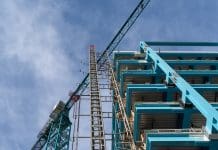Realising true disability access in the built environment is not just about minimum design standards or building regulations. But, with a common sense approach, it can be achieved in a cost-effective manner, says Turner & Townsend’s Richard Dryden
Contrary to what seems to be the widespread understanding across our industry, the Disability Discrimination Act 1995, or DDA, has not been in force since October 2010. Seven years on and the DDA is still continually referenced.
The DDA was replaced by the Equality Act 2010. This change was more than simple rebranding; it has far wider implications and there is a need for better awareness and understanding across the industry.
The Equality Act 2010 provides greater consistency than the DDA and, in some areas, strengthens provisions. Clients and asset operators need to be fully aware of their obligations, which in turn, will allow us to correctly manage their expectations. Pertinent parts of the Equality Act 2010 include, but are not limited to:
• Part 3: Goods, facilities and services;
• Part 4: Buying or renting land or property;
• Part 5: Employment;
• Part 6: Education;
• Part 12: Transport.
All the above applicable to the design of the built environment.
The Equality Act 2010 is structured around nine “protected characteristics”, one of which is disability, and it prohibits discrimination, harassment and victimisation against all those who fall within these groups.
Who is disabled?
The Equality Act defines a disabled person as: “Someone who has a physical or mental impairment which has a substantial and long-term adverse effect on their ability to carry out normal day-to-day activities.”
It is legally recognised that “long term” is defined as 12 months, although people with a terminal illness are covered from the point of diagnosis.
While the international symbol for access depicts a wheelchair user, the majority of disabled people do not use a wheelchair and there is a wide variety of disabilities that must be considered when addressing access for all. These include, but are not limited to:
• Sensory impairments (eg visual and/or hearing);
• Mental illnesses (eg depression, stress, anxiety, phobias, bipolar disorder, schizophrenia, etc);
• Learning disabilities (eg autistic impairments, dyslexia, down syndrome, etc);
• Mobility and dexterity impairments;
• Communication impairments;
• Physical coordination impairments;
• Memory/concentration impairments.
Disability access in the built environment
Nowhere in the Equality Act 2010 does it state that “accessible environments” should be provided for disabled people, either in the workplace or in accessing education, or goods, facilities and services. Rather, duties under the Equality Act 2010 include the requirement to consider barriers created by physical features of buildings and to make adjustments in certain circumstances, while focusing wholly (as applicable) on:
• Access to services;
• Access to curriculum;
• Access to employment.
This distinction is important, especially when (limited) funds are required to improve an existing estate. Focus should be on providing the best access possible to the functions noted above, not necessarily focusing spend on gaining access to 100% of a building or site. This can improve the quality of function provided and drastically save costs.
Reasonableness
Another consideration when developing disability access in the built environment (notably on existing sites) is ensuring funds and resources are focused correctly and ‘reasonably’. To do this, you should note items that would have a noticeable impact, while considering:
· Extent to which step would be effective;
· Extent to which step is practical;
· Cost;
· Disruption;
· Extent of resources;
· Resources already spent;
· Availability of financial or other assistance.
It is imperative to note that cost must not be considered as a sole reason not to improve disability access and all avenues should be explored in order to improve accessibility, even if unorthodox and/or not meeting recognised standards (only as applicable).
In historic buildings, for example, solutions could be accepted that do not meet recognised standards, but improve access while being sympathetic to the original make-up of a building.
Design standards
A building (or its elements), in itself, cannot be ‘Equality Act-compliant’. Yet this is something that is asked by clients and service providers on a regular basis. Rather than building compliance, it is full access to services, education and employment that matters and this can be delivered in numerous ways – often with minimal impact on existing environments.
Importantly, Building Control approvals do not necessarily equate to meeting the requirements of the Equality Act 2010. Building Control approvals are focused on the Building Regulations, which are minimum statutory standards. Reasonableness under the Equality Act 2010 may dictate that more onerous standards should be applied. These include, but are not limited to:
· BS8300: Design of buildings and their approaches for disabled people;
· DfT: Inclusive Mobility;
· Sport England: Accessible Sports Facilities;
· Visit Britain: National Accessible Scheme;
· Unorthodox/bespoke solutions (notably in existing buildings).
There is no reason if a scheme design specification is developed by cherry-picking from a range of standards in order to assist with delivering an asset that meets the needs of all its users.
Conclusion
The provision of inclusion and full disability access in the built environment can deliver social and business benefits, and enable providers to keep pace with the ever-increasing demands of society. The shift from the DDA to the Equalities Act reflects this, but we need better engagement from the industry to reach the best outcomes – and that doesn’t have to mean more cost.
Early identification (RIBA stage 0/1) of user needs is essential in order to recognise which design standards should be applied. It is our opinion that simply stating Approved Document M and/or BS8300 compliance in Employer’s Requirements is detrimental to providing a truly accessible and inclusive environment. It is access to employment, curriculum or services that matters.
Designers may ‘get’ standards but do not necessarily understand disability. Consider input from a suitably qualified person who understands both the built environment and pan-disability needs, ie a National Register of Access Consultant (NRAC) – Consultant Member. This will also help ensure a scheme is accessible for all relevant types of disability, be they physical, mental, sensory or any other.
Access consultants (with regards to building life) should be generally cost-neutral and assist with protecting all items noted above. They can also add to the usability of a building, along with:
· Complying with legislation in a cost-effective manner;
· Targeting resources correctly to avoid unsightly and costly retrofitting;
· Providing ‘true’ accessibility.
Refreshing our attitudes to delivering good design for disability does not have to be taxing. The regulatory framework encourages us to take a common sense approach, and that’s exactly what’s required.
Richard Dryden PG Dip (Merit), NRAC (Consultant)
Associate Director
Turner & Townsend
Twitter: @turnertownsend








![[VIDEO] UK-based firm reveals ‘world’s first’ fully AI-driven architectural project Studio Tim Fu has revealed the 'world's first' fully AI-driven architectural project in Slovenia, developing six luxury villas on the Lake Bled Estate](https://www.pbctoday.co.uk/news/wp-content/uploads/2025/03/Interior-1-studio-tim-fu-218x150.gif)





